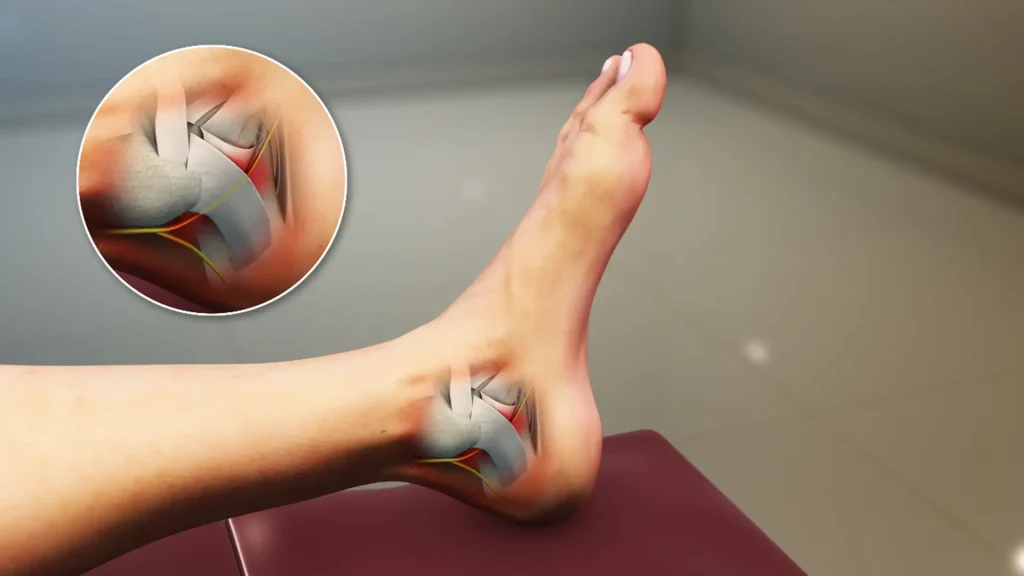Nerve Compression Causing Pain and Numbness in the Foot and Ankle
What Is Tarsal Tunnel Syndrome?
Tarsal Tunnel Syndrome (TTS) is a condition caused by compression of the posterior tibial nerve as it travels through the tarsal tunnel — a narrow space located on the inside of the ankle. Similar to carpal tunnel syndrome in the wrist, TTS can lead to pain, burning, tingling, or numbness in the foot and ankle. The condition may develop gradually or occur suddenly after an injury.
Causes and Risk Factors
- Flatfoot deformity (causes stretching of the nerve)
- Trauma to the ankle (sprains, fractures, or swelling)
- Varicose veins, ganglion cysts, or lipomas in the tarsal tunnel
- Arthritis or inflammation of nearby tendons
- Diabetes or other systemic nerve conditions
- Scar tissue or repetitive stress injuries
Symptoms
- Burning, tingling, or numbness along the sole of the foot
- Pain radiating from the inside of the ankle into the foot
- Increased symptoms with prolonged standing or walking
- Nighttime pain or symptoms worsened by activity
- Weakness or loss of coordination in severe cases
Diagnosis
- Clinical exam with tapping over the nerve (Tinel’s sign) to reproduce symptoms
- Nerve conduction studies (EMG/NCV) to measure nerve function
- MRI or ultrasound to evaluate for space-occupying lesions or inflammation
- Gait and posture evaluation for underlying biomechanical contributors
Treatment
Non-Surgical Treatment
- Rest and activity modification to reduce nerve irritation
- Anti-inflammatory medications
- Shoe inserts or custom orthotics to support foot structure
- Bracing or ankle supports
- Physical therapy to improve foot alignment and reduce pressure on the nerve
- Corticosteroid injections in select cases
Surgical Treatment
- Considered for patients who do not improve with conservative care
- Involves decompression of the tarsal tunnel to relieve pressure on the nerve
- May include removal of masses, release of tight structures, or correction of flatfoot
Recovery Timeline
- Mild cases treated conservatively often improve in 6–8 weeks
- Post-surgical recovery typically involves 2–4 weeks of restricted activity
- Full return to daily activities or sports expected within 8–12 weeks, depending on severity and nerve healing
Expert Treatment at Kerlan Jobe Institute
At Kerlan Jobe Institute, our specialists use advanced imaging and clinical evaluations to diagnose Tarsal Tunnel Syndrome accurately. We offer both non-invasive and surgical solutions tailored to each patient’s anatomy and lifestyle — with the goal of restoring comfort and function.

